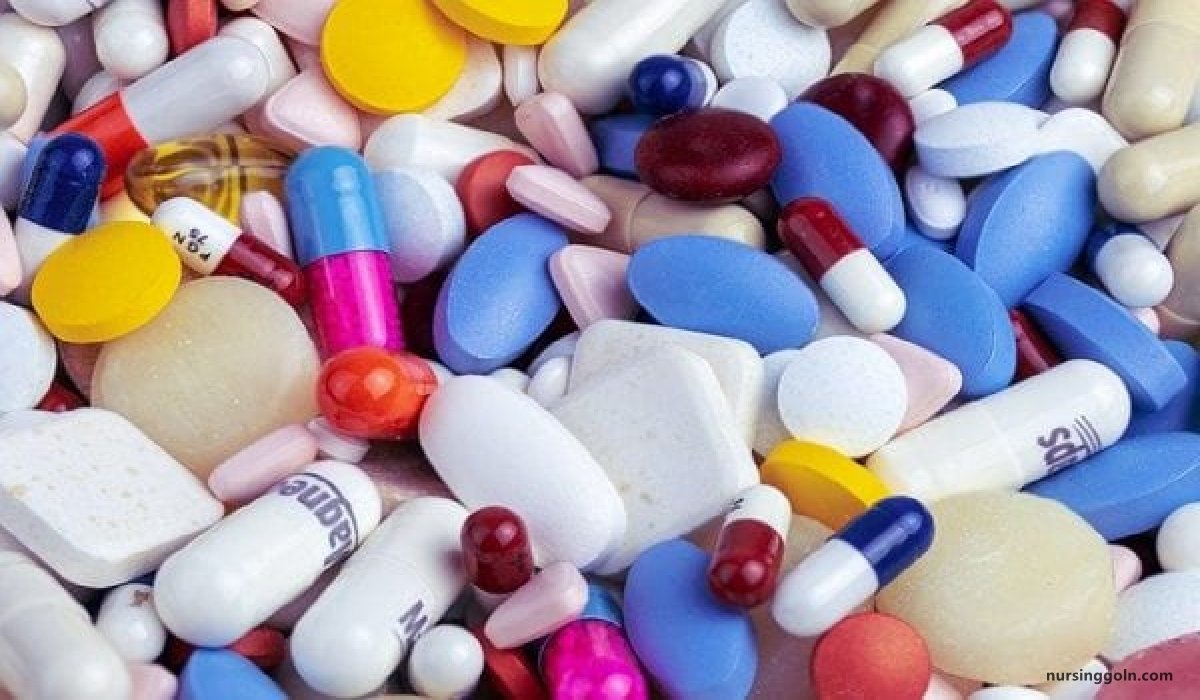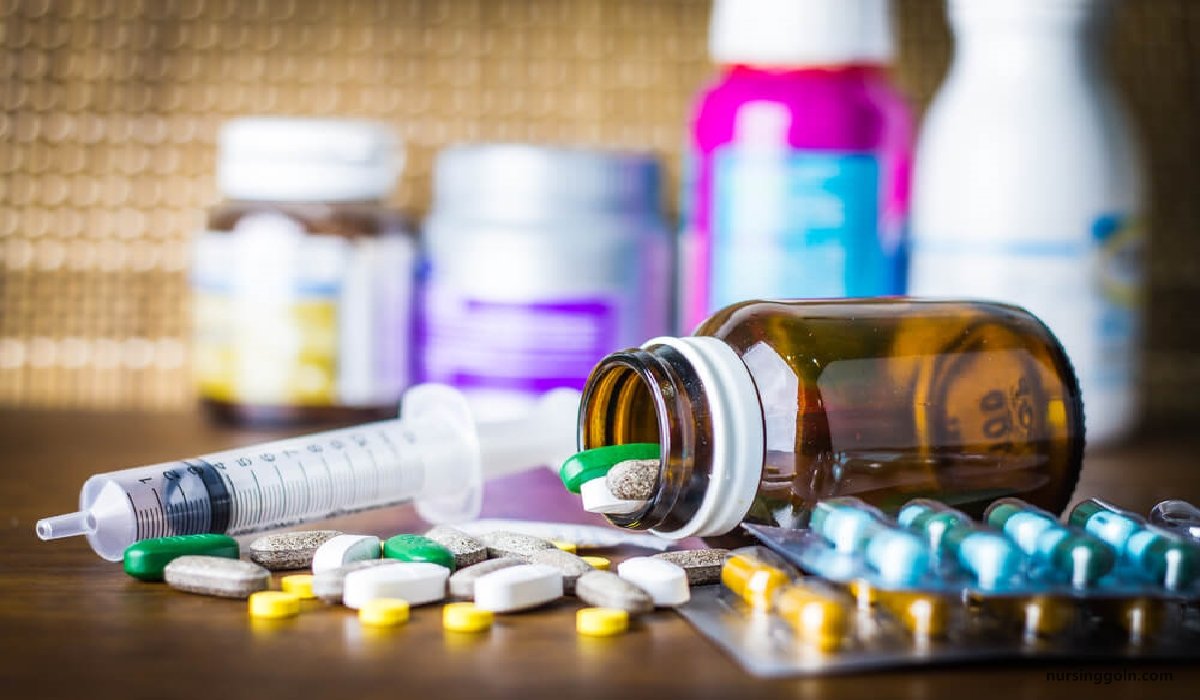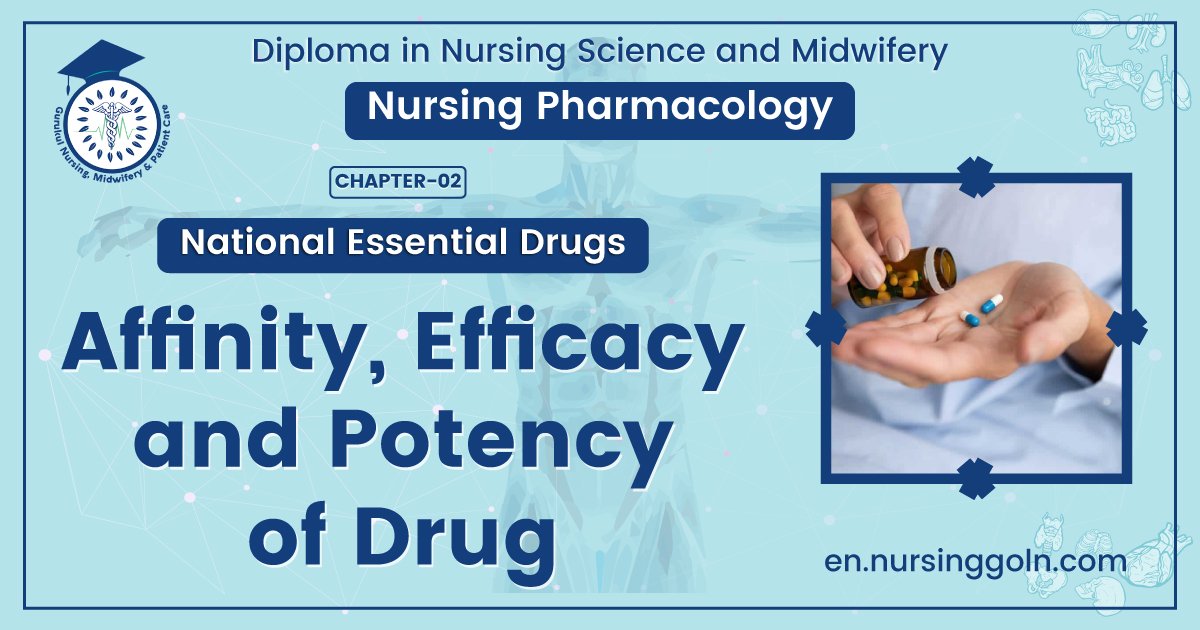Affinity, Efficacy and Potency of Drug – This book covers the entire syllabus of “Pharmacology” prescribed by BNMC- for diploma in nursing science & midwifery students. We tried to accommodate the latest information and topics. This book is an examination set up according to the teachers’ lectures and examination questions.
At the end of the book, previous questions are given. We hope in touch with the book students’ knowledge will be upgraded and flourish. The unique way of presentation may make your reading of the book a pleasurable experience.

Affinity, Efficacy and Potency of Drug
Based on affinity and efficacy:
- Affinity: Tendency of drug to bind with receptor is termed as affinity.
- Efficacy: Ability of drug, after binding with receptor, initiate changes that culminate into effects iscalled efficacy.
- Potency: Comparative measure of different doses of two drugs that are needed to produce the same effect is called potency.
| Drug type | Affinity | Efficacy | Example |
| Agonist | + + + | + + + | Pilocarpine |
| Partial agonist | + + + | Less than true agonist | Clonidine |
| Antagonist | + + + | No efficacy | Atropine |

Difference between Efficacy and Potency:
| Efficacy | Potency |
| Ability of drug, after binding with receptor, initiate changes that culminate into effects is called efficacy | Comparative measure of different doses of two drugs that are needed to produce the same effect is called potency |
| Efficacy determines clinical effectiveness of a drug. | Potency determines administered dose of chosen drug |
| It may be affected by the characteristics of a particular drug-receptor interaction. | Potency is affected by affinity of receptors for binding the drug and also by efficiency of drug- receptor interactions |
| Efficacy helps to choose among drugs | Potency does not helps to choose among drugs |
| Important in the clinical effectiveness of a drug | Important in the drugs of low therapeutic index. |

Read more:
